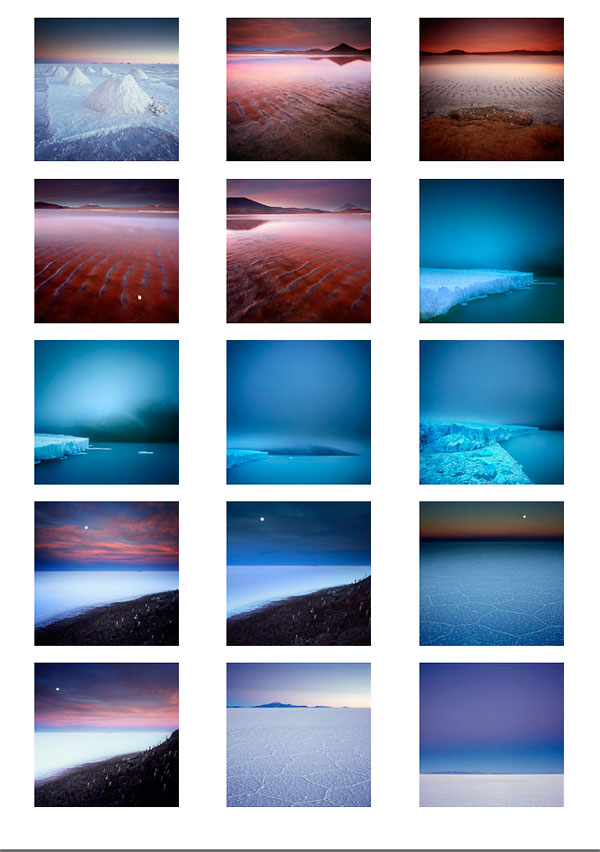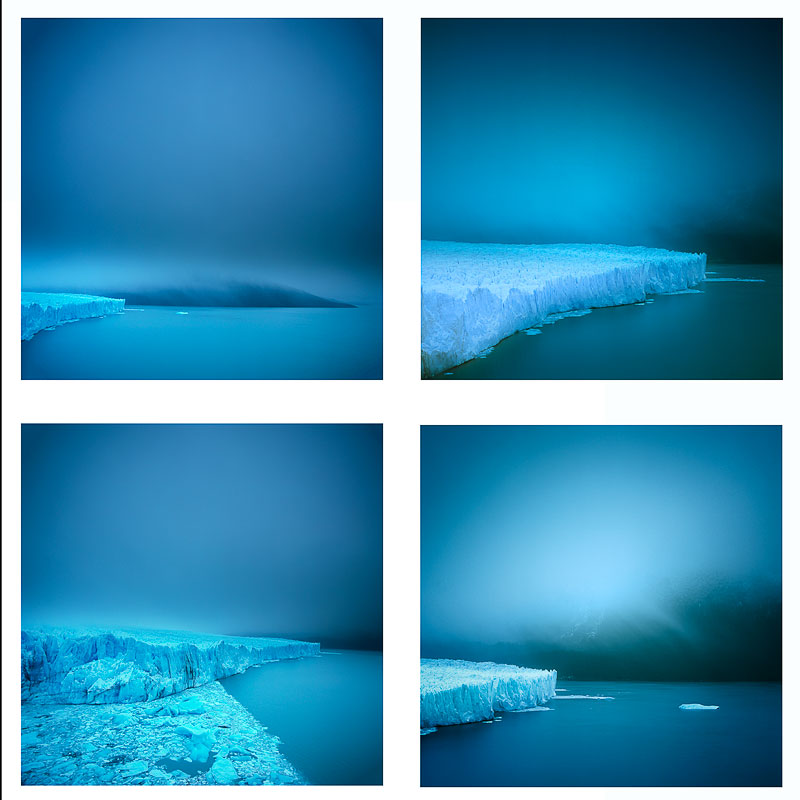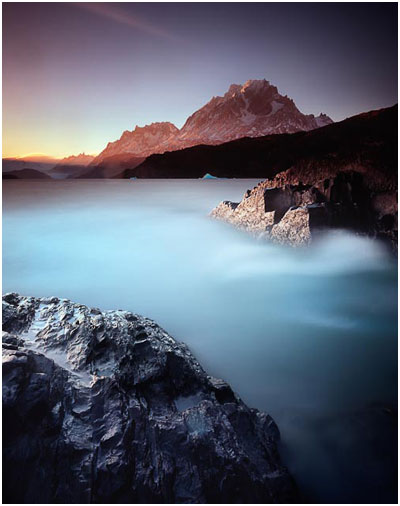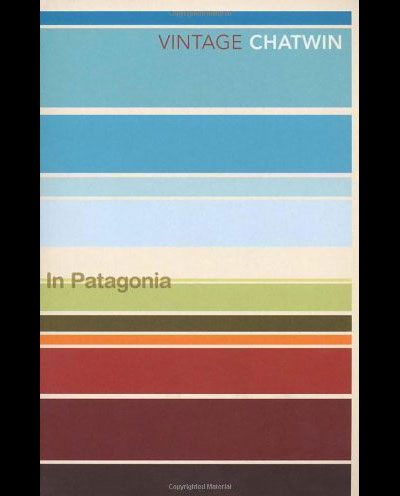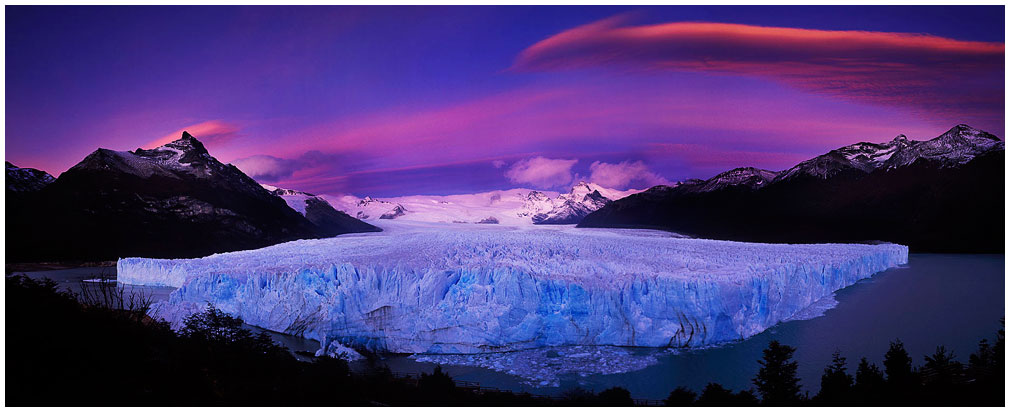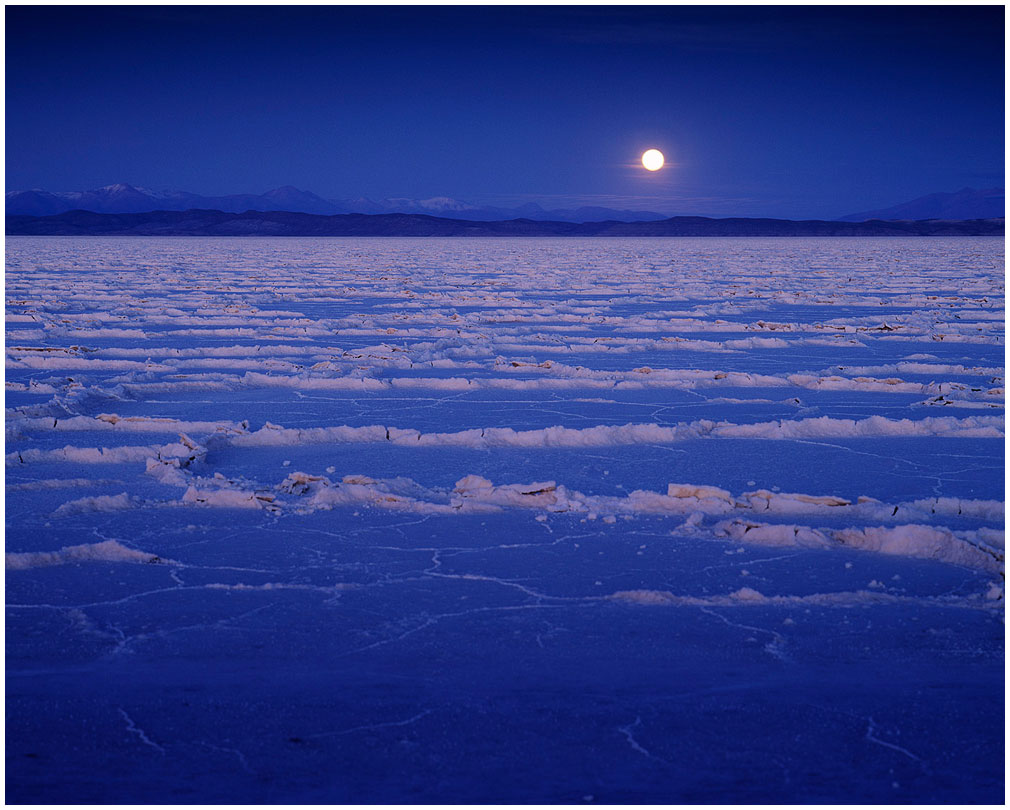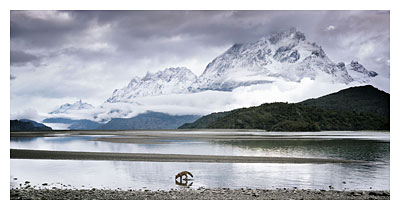I often think that it's a very tempting thing, to include the entirety of the subject you're shooting, into the main body of the frame. But some subjects are so large, that it's impossible to get them into the frame in a pleasing way, without them engulfing the entire photo.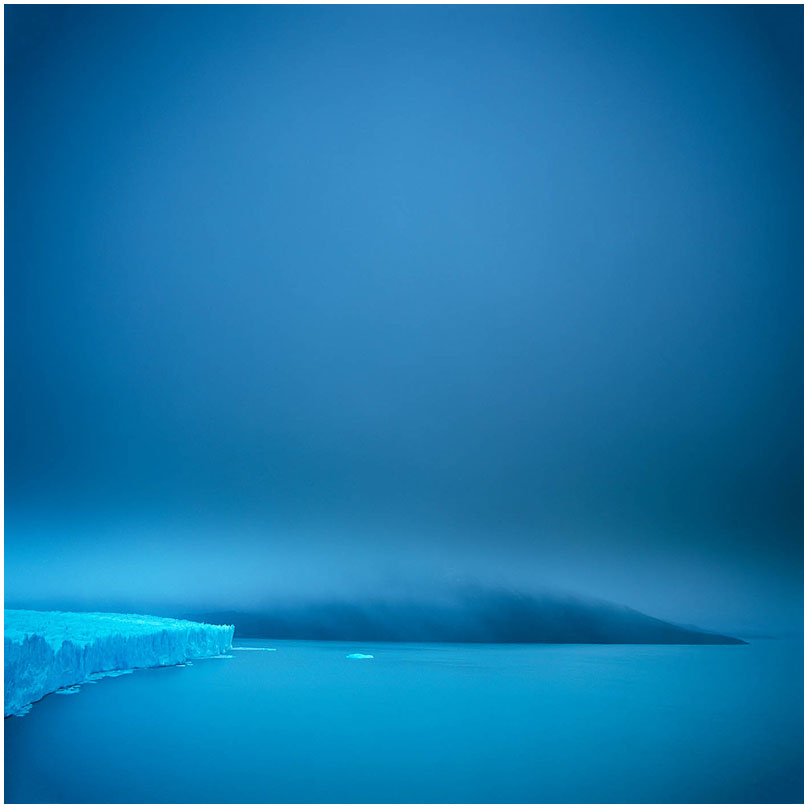 The Perito Moreno glacier in Argentina is like that.
The Perito Moreno glacier in Argentina is like that.
In this photo, you can see the tongue of the glacier poking into the left hand side. If I were to let you know that the face of the glacier is around 80 metres high and that the entire tongue is around four miles wide, then I'd hope that this would convey just how large it is. It's imply too wide to fit into the frame.
I shot the same glacier a long time ago, and I managed to 'stitch a 180º composite together (see last image in this post). It's perhaps more of a 'traditional' view of the glacier. We're presented with the entire thing and I think this is an obvious thing to want to do. I was curious as to how I would shoot the glacier on my return this summer, knowing that I wasn't going to stitch any panorama's together, and also knowing I would be composing in square.
I think a few things have changed in me since I made the panorama in 2003;
1) I'm much more interested in the atmospheric elements of the weather. I love it when the cloud comes down and things in the distance become veiled. Fog or inclement weather in general can really change the mood of a scene. And I think it's important to be aware of this. So often I feel, we are influenced by how we feel - if it's a cold wet day, we can feel miserable and not inclined to make images. But we have to take a step back, think about the scene as a final image. We have to detach ourselves in a way that we can simply see the tones, and the mystery rather than think the day is a right-off.
I don't think I would have made my recent image (the first one in this post) if I hadn't learned that. I think I would have just packed up my camera and thought nothing was happening.
But I'm now of the opinion that all days are beautiful. It's just up to us to recognise this and work with what we're given. I don't feel miserable in low-cloud inclement days now. I actually feel the beauty of it.
2) I'm also much more interested in playing with what's not there. Our eye has a tendency to fill in the gaps for us. I deliberately decided to include just a tiny part of the Perito, because I felt the space around it - all that expanse of empty sky had a lot of beauty in it. I was particularly drawn to the headland (the dark) land that fills the centre of the frame - see how it tapers off towards the far right? That was an intentional composition device. The top of the headland is missing because the cloud in the sky is reaching down towards the sea. In some respects, this is really an image about 'context'. I've given you the glacier, and we know it's a shot about that, but I've mostly decided to show you the environment it sits in. In this case, I'm trying to convey the atmospheric / weather conditions of the day and how the glacier sits within that space. We don't actually see much of the Perito Moreno glacier and I think our mind is filling in for what is not there.
Admittedly, these two images are of very different kinds of days. I was lucky that the weather had closed in the day we visited this summer. The landscape was less visible, more hidden, and I think that allowed me to reduce, and abstract, to make the photograph more a 'graphic' than a recording of a piece of scenery. For me photography has never been about the verbatim, but more about suggestion.
I'd like to finish up by saying that in this post, I've also discussed how I've changed. I think it's very important to be able to look back at your own work and your current work, and consider the direction that you're heading in. I think it's healthy to stop and reflect, to recognise the changes that are happening inside of you and to know what it is that you're seeking in your current 'story making'. I use that phrase deliberately, because I feel that all photographers are simply telling stories with their images.


